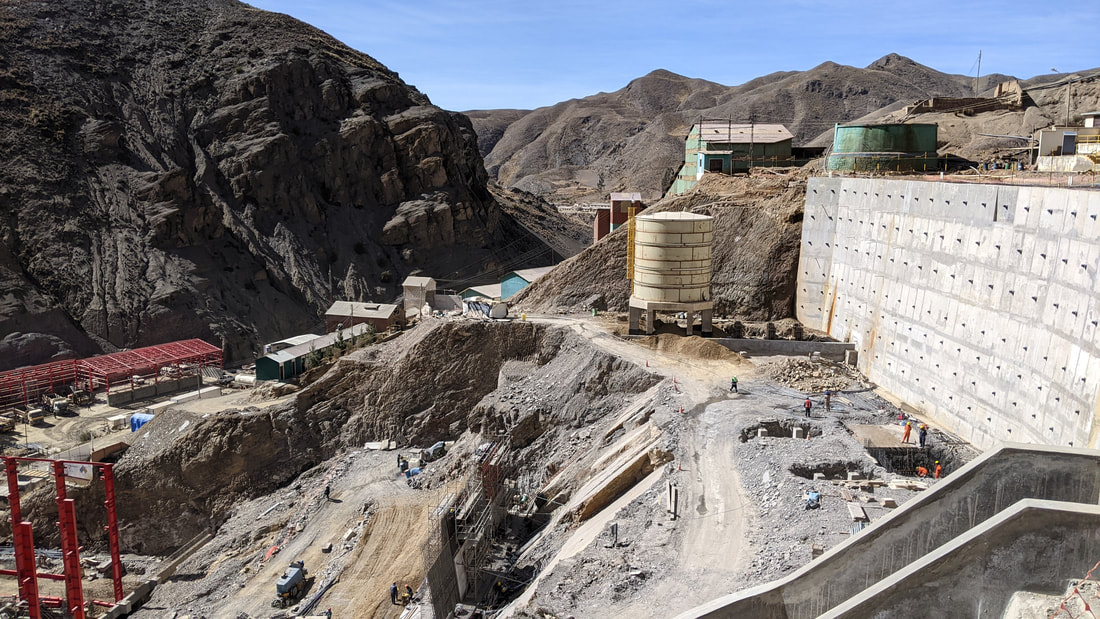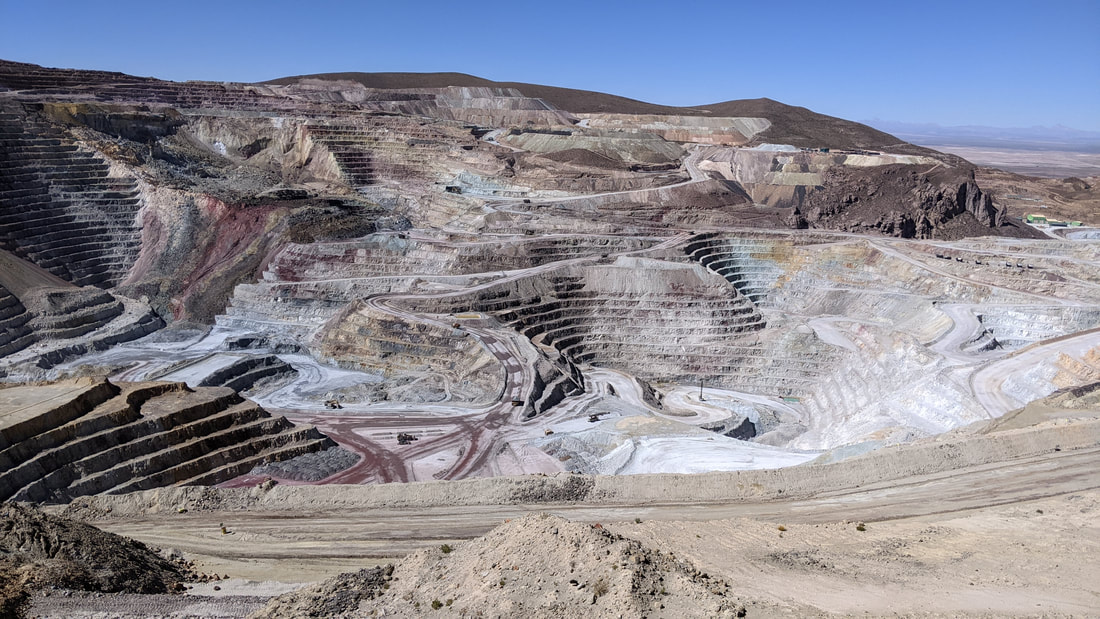It's no secret that current efforts to decarbonize the global energy system are materially and spatially intensive. Our newsfeeds are full of stories about rising demand for "critical minerals," such as lithium, nickel, manganese, and rare earths. Ramping up extraction of these resources entails serious environmental risks, but these are difficult to balance against the urgency of addressing climate change - not to mention potential energy insecurities. Moreover, the technologies for which these minerals are needed - such as solar panels, wind turbines, and new energy storage systems - are all expected to take up a lot more space than oil and gas. Finally, energy transition plans often include increasing biofuel production, which can have the ironic effect of contributing to deforestation and/or food insecurity. How are these varied energy transition efforts interacting, and who are they affecting? How can decarbonization goals be met without deepening environmental injustices globally?
This project analyzes multi-scalar interactions between energy transitions, economic development, and socio-environmental conflict in several Latin American countries. While most scholarship has focused on global-local impacts (e.g. the degree to which US/European demand for critical minerals affects communities and environments in the Global South), this project foregrounds the role of national and regional policies in Latin America. Given their responsiveness to political pressures, elected governments tend to green light carbon reduction projects that can contribute to economic development as well as low-carbon energy production. They may also prioritize projects that benefit political allies or appease opposition. All this shapes uneven patterns of resource extraction, infrastructural development, and socio-environmental conflict.

As in Chile and Argentina, Bolivia's salt flats contain a significant quantity of lithium, a critical mineral required for lithium-ion batteries. Bolivia is not yet a major lithium exporter because the state has focused on moving up the value chain. The goal is to export not only lithium, but also made-in-Bolivia lithium-ion batteries. Photo by Andrea Marston.
For me, this project involves two levels of collaboration. First, with support from the Rutgers Research Council's Social and Racial Justice Award, I am collaborating with two of my doctoral advisees, Daniela Mosquera-Camacho and Jamie Gagliano. We are comparing energy transition plans and experiences across three strikingly different Latin American countries: Bolivia, Colombia, and Paraguay.
In Bolivia, the state is investing heavily in new critical mineral projects (especially lithium, but also nickel and rare earths) as well as bolstering the traditional mineral sector (zinc, tin, silver); it is also developing a biofuels industry for the first time. In Colombia, the new administration is rolling out a variety of carbon reduction projects simultaneously: huge solar farms, copper and cobalt mines, and biofuel plantations are all layered on top of historic resource frontiers. In Paraguay, the state has focused on carbon capture through reforestation, but the eucalyptus trees that dominate these projects are causing a cascading series of negative social and environmental impacts.
In Bolivia, the state is investing heavily in new critical mineral projects (especially lithium, but also nickel and rare earths) as well as bolstering the traditional mineral sector (zinc, tin, silver); it is also developing a biofuels industry for the first time. In Colombia, the new administration is rolling out a variety of carbon reduction projects simultaneously: huge solar farms, copper and cobalt mines, and biofuel plantations are all layered on top of historic resource frontiers. In Paraguay, the state has focused on carbon capture through reforestation, but the eucalyptus trees that dominate these projects are causing a cascading series of negative social and environmental impacts.
Across all three cases, our trans-scalar analysis demonstrates the extent to which energy matrices, extractive economics, and land use changes must be analyzed in relation to one another. We frame our argument in relation to "post-extractivism," a concept that has been elaborated by Latin American scholars such as Eduardo Gudynas and Maristella Svampa. Since the commodity boom of the early 2000s, Latin American governments from across the political spectrum have pursued extractivist economic activities - that is, they have focused on exporting increasingly large quantities of unrefined natural resources, often at the expense of domestic manufacturing. Scholars and activists are now calling for a "socioecological transition" that does not just decarbonize the energy matrix but also moves beyond extractive economics.
Our research suggests that a consideration of energy and land together is critical for post-extractivist climate justice. We develop this position in our article, tentatively titled "Climate, Energy, and Land: A Trans-Scalar Approach to Carbon Reduction Projects in Bolivia, Colombia, and Paraguay."
Our research suggests that a consideration of energy and land together is critical for post-extractivist climate justice. We develop this position in our article, tentatively titled "Climate, Energy, and Land: A Trans-Scalar Approach to Carbon Reduction Projects in Bolivia, Colombia, and Paraguay."
Second, I am collaborating closely with researchers from CEDLA (Centro de Estudios para el Desarrollo Laboral y Agrario), a Bolivian research center. I spent June 2022, November 2022, and June 2023 conducting interviews and site visits with Alfredo Zaconeta, with whom I am currently co-authoring three articles about the energy transition and mining in Bolivia. All three will be published in Spanish in CEDLA's in-house journals, though we also plan on translating and reformatting their content for English-language journals. Scroll down for details on each of these articles.
Article 1) Minería en Bolivia: Escenarios y desafíos de un nuevo ciclo (Mining in Bolivia: Scenarios and Challenges of a New Cycle)
Since the pandemic, mining activity has undergone a significant change, leading to an increased demand for rare earth elements, critical minerals, and strategic minerals. The aim of this study is to examine the current situation for the Bolivian mining sector by analyzing the role of its operators, its current regulations, and sectoral policies to confront the new challenges of mining activity, taking into consideration its sensitivity to international market trends.
Since the pandemic, mining activity has undergone a significant change, leading to an increased demand for rare earth elements, critical minerals, and strategic minerals. The aim of this study is to examine the current situation for the Bolivian mining sector by analyzing the role of its operators, its current regulations, and sectoral policies to confront the new challenges of mining activity, taking into consideration its sensitivity to international market trends.
Article 2) Recursos evaporíticos: Entre dilemas, oportunidades y desafíos (Evaporitic Resources: Between Dilemmas, Opportunities, and Challenges)
In the context of the global energy transition, lithium has become a strategic resource. Since 2008, the Bolivian government has proposed the industrialization of lithium with a 100% state-owned vision. However, in the current government's management, this initiative has undergone changes in its direction, leading to uncertainty regarding the public policy for this resource. This present study aims to expose the limits of state actions to achieve effective utilization of evaporitic resources, the contradiction in their policies, and the constraints that have resulted in a delay in the industrialization process.
In the context of the global energy transition, lithium has become a strategic resource. Since 2008, the Bolivian government has proposed the industrialization of lithium with a 100% state-owned vision. However, in the current government's management, this initiative has undergone changes in its direction, leading to uncertainty regarding the public policy for this resource. This present study aims to expose the limits of state actions to achieve effective utilization of evaporitic resources, the contradiction in their policies, and the constraints that have resulted in a delay in the industrialization process.
Article 3) Escenarios para una transición energética en Bolivia (Scenarios for an Energy Transition in Bolivia)
Countries around the world are designing energy transition plans. However, Bolivia is experiencing a delay in this transition due to the lack of planning accompanied by a deep dependency on natural gas revenue. This study aims to analyze this situation by evaluating the different initiatives proposed by the government (hydroelectric power, nuclear energy, gas, etc.) and their limitations.
Countries around the world are designing energy transition plans. However, Bolivia is experiencing a delay in this transition due to the lack of planning accompanied by a deep dependency on natural gas revenue. This study aims to analyze this situation by evaluating the different initiatives proposed by the government (hydroelectric power, nuclear energy, gas, etc.) and their limitations.







